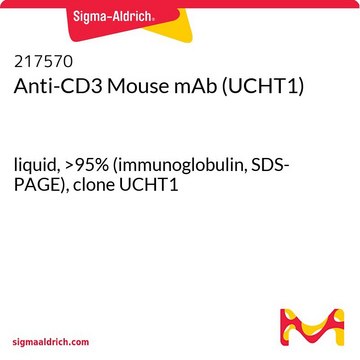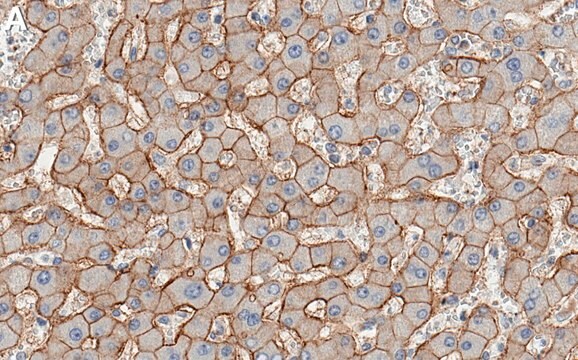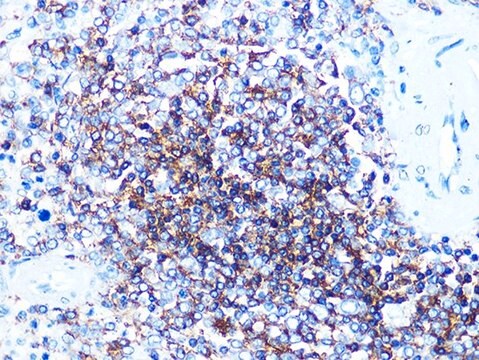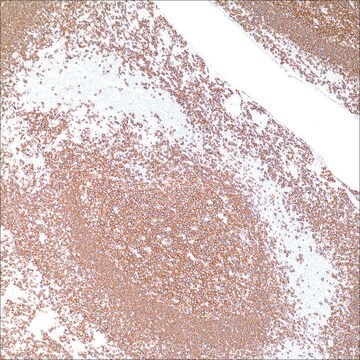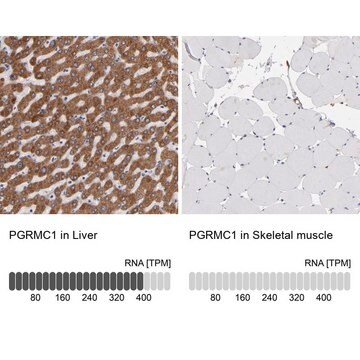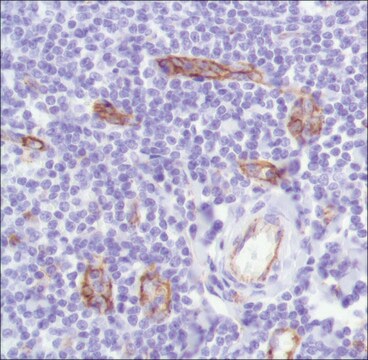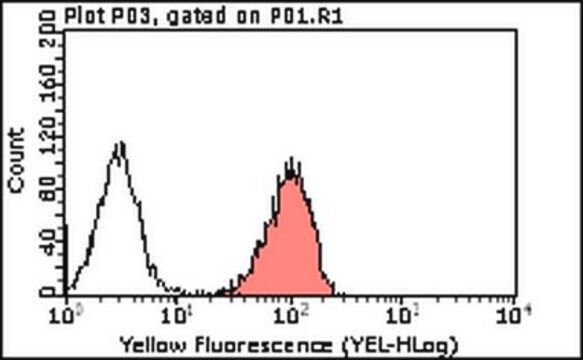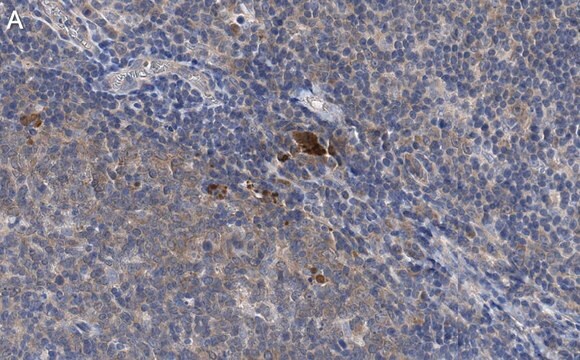SAB4700184
Monoclonal Anti-CD44 antibody produced in mouse
clone MEM-263, purified immunoglobulin, buffered aqueous solution
Sinónimos:
Anti-Pgp-1
Iniciar sesiónpara Ver la Fijación de precios por contrato y de la organización
About This Item
UNSPSC Code:
12352203
NACRES:
NA.41
Productos recomendados
biological source
mouse
Quality Level
conjugate
unconjugated
antibody form
purified immunoglobulin
antibody product type
primary antibodies
clone
MEM-263, monoclonal
form
buffered aqueous solution
species reactivity
canine, human, pig
concentration
1 mg/mL
technique(s)
flow cytometry: suitable
isotype
IgG1
NCBI accession no.
UniProt accession no.
shipped in
wet ice
storage temp.
2-8°C
target post-translational modification
unmodified
Gene Information
human ... CD44(960)
General description
The antibody MEM-263 reacts with extracellular (N-terminal) domain of standard CD44 (Phagocyte glycoprotein 1), a 80-95 kDa transmembrane glycoprotein (hyaladherin family) present on the most of cells and tissues (leukocytes, endothelial cells, mesenchymal cells, etc.); it is negative on platelets and hepatocytes.
Immunogen
COS-7 African green monkey kidney cells
Application
The reagent is designed for Flow Cytometry analysis. Suggested working dilution is 4 μg/mL of sample. Indicated dilution is recommended starting point for use of this product. Working concentrations should be determined by the investigator.
Features and Benefits
Evaluate our antibodies with complete peace of mind. If the antibody does not perform in your application, we will issue a full credit or replacement antibody. Learn more.
Physical form
Solution in phosphate buffered saline, pH 7.4, with 15 mM sodium azide.
Disclaimer
Unless otherwise stated in our catalog or other company documentation accompanying the product(s), our products are intended for research use only and are not to be used for any other purpose, which includes but is not limited to, unauthorized commercial uses, in vitro diagnostic uses, ex vivo or in vivo therapeutic uses or any type of consumption or application to humans or animals.
¿No encuentra el producto adecuado?
Pruebe nuestro Herramienta de selección de productos.
Storage Class
10 - Combustible liquids
flash_point_f
Not applicable
flash_point_c
Not applicable
Elija entre una de las versiones más recientes:
¿Ya tiene este producto?
Encuentre la documentación para los productos que ha comprado recientemente en la Biblioteca de documentos.
Markus Schosserer et al.
BMC research notes, 8, 767-767 (2015-12-15)
Regenerative medicine is strictly dependent on stem cells as a source for a high diversity of somatic cells. However, the isolation of such from individuals suffering from severe genetic skin blistering diseases like epidermolysis bullosa (EB) is often associated with
Hong-Min Li et al.
Life sciences, 106(1-2), 50-57 (2014-05-02)
Inducible nitric oxide synthase (iNOS) over-expression is considered critical to the death of transplanted cells in infarcted myocardium. The present study was to investigate the effect of iNOS on the survival of transplanted bone marrow mesenchymal stem cells (BMSCs) in
Bin Bao et al.
Stem cells and development, 23(16), 1947-1958 (2014-04-17)
Pancreatic cancer (PC) is one of the most deadly cancers. The higher mortality is in part due to treatment resistance and early onset of metastasis. The existence of cancer-stem-like cells (CSLCs) has been widely accepted to be responsible for tumor
Mark J Modelski et al.
Biology of reproduction, 91(5), 109-109 (2014-09-19)
To initiate the crucial cell adhesion events necessary for fertilization, sperm must penetrate extracellular matrix barriers containing hyaluronic acid (HA), a task thought to be accomplished by neutral-active hyaluronidases. Here we report that the ~57 kDa hyaluronidase 2 (HYAL2) that
Yuanyuan Cheng et al.
Molecular carcinogenesis, 53(9), 686-697 (2013-05-18)
Multidrug resistance (MDR) is one of the most important factors leading to chemotherapeutic failure in patients with breast cancer. The invasive/metastatic ability of MDR cells is strengthened compared with their parental cells. However, the mechanisms underlying MDR have not been
Nuestro equipo de científicos tiene experiencia en todas las áreas de investigación: Ciencias de la vida, Ciencia de los materiales, Síntesis química, Cromatografía, Analítica y muchas otras.
Póngase en contacto con el Servicio técnico
